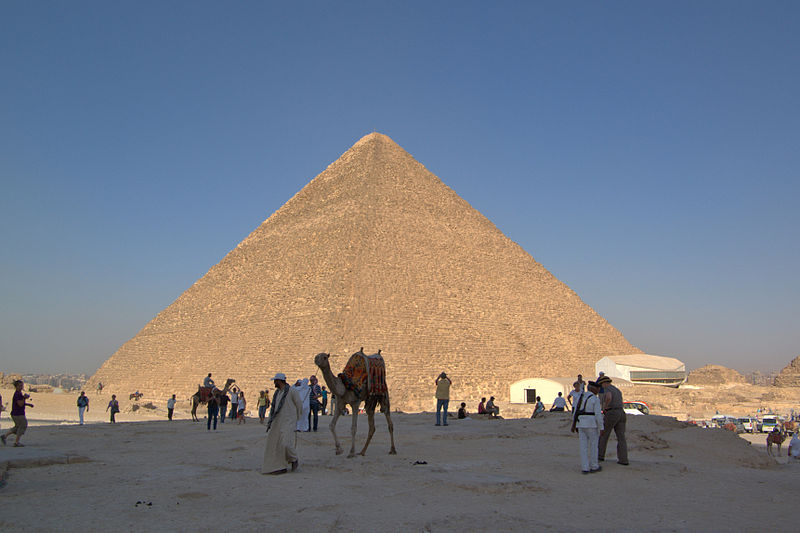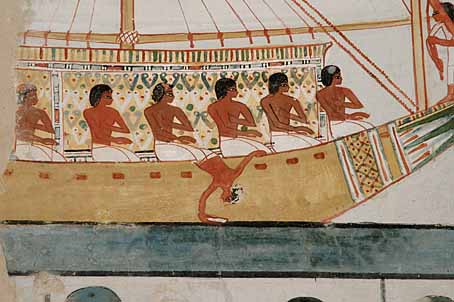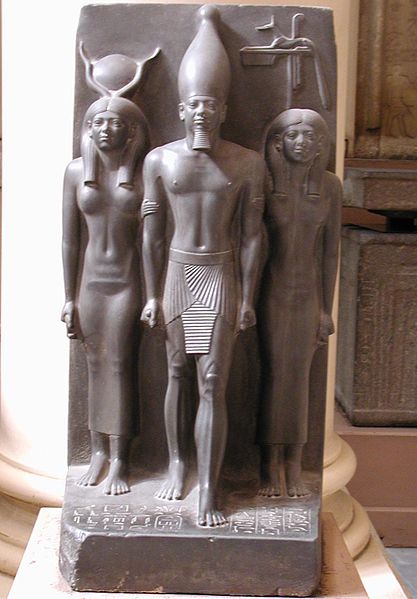The Old Empire of Egypt
 The Old Empire is also called “time of the pyramids”. It existed from 2640 BC until 2200 BC. In its beginnings, Egypt had been an empire of peace. The pharaohs were recognized as the greatest rulers of the Old World. They believed in life after death and wanted to maintain their power over their subjects even after death. Thus, the pharaohs demanded greater tombs than the small ‘mastabas’, earthen mounds, under which their ancestors had been buried. They wanted to aim high and had magnificent tombs built. Everyone around the world was supposed to see how rich they were and masterly performances their builders could accomplish.
The Old Empire is also called “time of the pyramids”. It existed from 2640 BC until 2200 BC. In its beginnings, Egypt had been an empire of peace. The pharaohs were recognized as the greatest rulers of the Old World. They believed in life after death and wanted to maintain their power over their subjects even after death. Thus, the pharaohs demanded greater tombs than the small ‘mastabas’, earthen mounds, under which their ancestors had been buried. They wanted to aim high and had magnificent tombs built. Everyone around the world was supposed to see how rich they were and masterly performances their builders could accomplish.
How big was the Old Empire?

The Old Empire extended from the Mediterranean coast until the first Nile river cataract in the South. It consisted of the Nile Valley and the Nile Delta. Seafaring was important to the Egyptians. They used the Nile River like a highway, on which they transported goods and weapons. The pharaohs did not have to fear many enemies. The river strait on the first cataract prevented the Nubians from invading from the South of the Empire. In the East, the Sinai Peninsula with its extended desert areas blocked the invasion of the Syrians. In the West, the Libyan Desert extended. For them also the then large armies were difficult to conquer.
The Old Empire’s landmark: the pyramids of Giza

The stepped pyramid of pharaoh Djoser is considered the first pyramid. He had it built near the necropolis Saqqara. It was about 60m high and was built in steps. For the contemporaries at the time, the construction was overwhelming. Never before had there existed a tomb of this enormity. As a matter of fact, it was the first monumental building in the world. After Djoser, tyrant ruler Cheops came to power. HE wanted an even bigger and more beautiful tomb than Djoser. He had a pyramid built with a height of 146m. The Pyramid of Cheops was so gigantic that it was later declared one of the Seven Wonders of the Ancient World. Today, it is the only one of those wonder of the world left. Cheops son Chephren and his grandson Mykerinos had a tomb just as impressive built close to Cheops. To this very day their pyramids tower into the sky, close to Cairo. A sphinx with a friendly lion’s head guards the gigantic tombs. It is a symbol for Africa’s strength, which was immanent in the Pharaohs.
Trading expeditions and wars
The more powerful the Pharaohs became, the greedier they were. In the Nile Valley, wood, mineral ores, gold or exotic luxury goods were sparse. Thus, Pharaoh Snofru extended the empire to the west and south and started raids. With his army, he pushed forward across the first Cataract to Nubia. The armies travelled with donkey caravans, because at this time, there were no domesticated camels yet. From Nubia, they brought gold, cattle and slaves with them. In the north, the Egyptians dared to advance into the Sinai Desert. They wanted to mine turquoise and copper, both of which there was plenty of there. At the Red Sea, the Egyptians pushed forward to Punt, lying in the Ethiopia of today. From there, they returned with incense, ebony and leopard pelts. Egypt had become so big, that the empire had become difficult to rule. Was this the reason for the Old Empire’s decline?
The End of the Old Empire

The Old Empire collapsed under Pharaoh Pepi II., the last king of the 6th dynasty. A dynasty consisted of a family of rulers. If one family became extinct, the dynasty ended and another family ceased power. Pepi had the longest reign in history. He ascended the throne when he was 6 years old and ruled for 94 years. During his reign, the empire lost power and influence. The Egyptian provinces struggled for supremacy. For three centuries, civil wars shook the country and the empire once again separated into Upper- and Lower Egypt. Historians call this period the First Intermediate Period.


